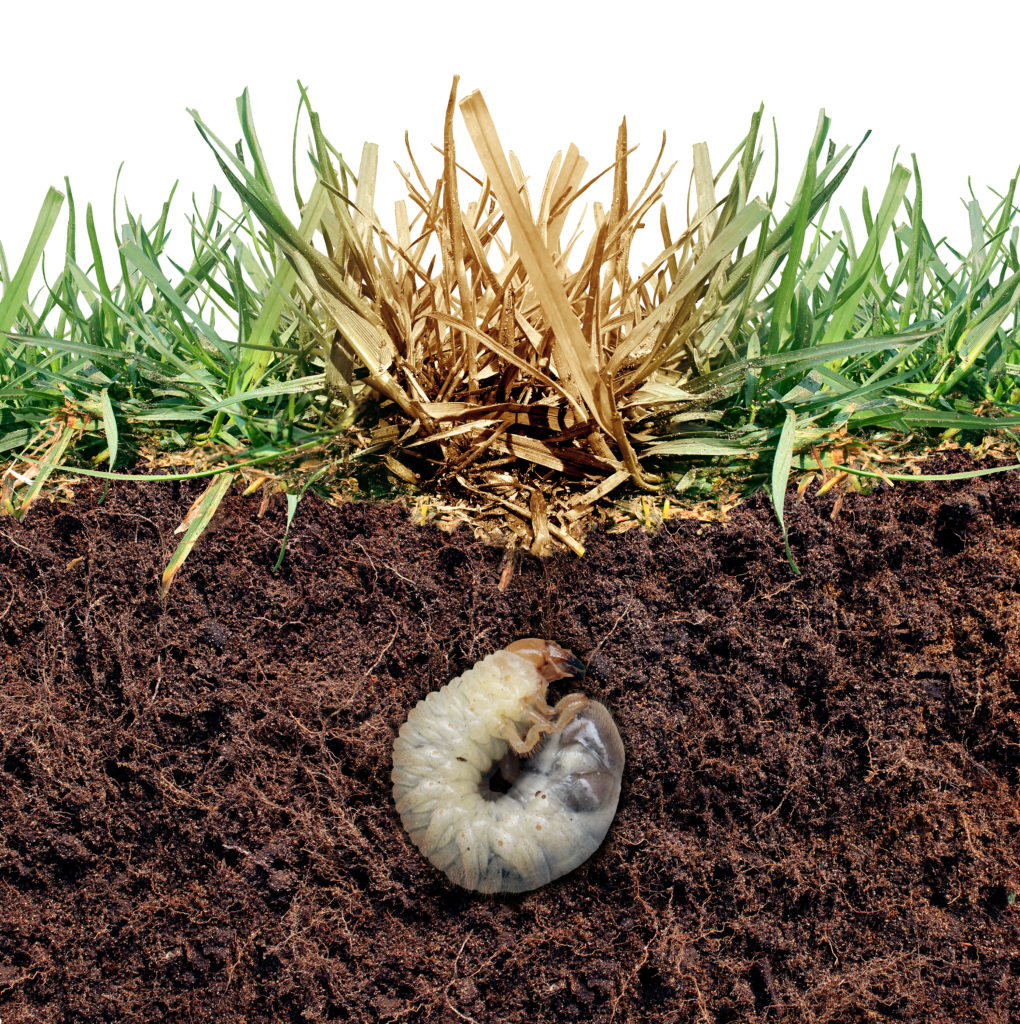What does grub damage look like in a lawn? Well, if your lawn is sporting some less-than-attractive grass, it could be grubs.
Grubs are the larvae of common bugs found in Ohio, such as June beetles (or June bugs) and Japanese beetles. These small, C-shaped worms can do large-scale damage. If you have grub damage to your lawn, you need to act fast.
How do you know if you have grub lawn damage?
Grubs feed on the roots of your grass, often hidden from view. But there are some hints that you have grubs. Here are some common signs of grub damage:
- Brown, thin patches of grass that do not correlate with drought. If your grass looks brown, has brown spots or patches and the blades of grass are thin and weak, you might have grubs.
- Grass that is loose and easily rolls up from the sod. Sometimes grubs will damage the root system of your lawn, resulting in sods that can be rolled up.
- You see bugs in your lawn. Grubs typically appear as white larvae. If you roll up your weakened sod and see these white worms, that is an obvious sign that grubs have infested your lawn!
- Your lawn feels spongy underfoot in areas. The root damage they inflict on your grass can make your lawn weak, prevent the roots from taking hold and lead to those spongy spots throughout.
- You see more wild animals feeding on your grass. Raccoons and birds, among other wildlife, will feed on grubs. If it seems you have more animals “dining” on your grass, that can be a sign the pesky larvae are present in your lawn.
Will grass grow back after a grub infestation?
The good news is you can restore your grass after a grub infestation. You will need to remove the dead grass and plant new grass seed to take its place.
How do you repair a lawn after grub damage?
Some of the steps can include raking the dead grass off of your lawn or removing the pieces that can be rolled up. Once this is done, add fertilizer followed by grass seed. After planting new grass, be sure to water daily. You can also help fertilizer take hold with core aeration, a process where you make small holes in your sod to help the nutrients reach the grass roots.
Grass Master has a product that can act both as a curative and a preventative for grubs. Obviously, preventing the grubs in the first place is always your best bet!
How do you prevent grubs in your lawn?
Prevention should start with a product in the spring. That is when the beetles lay the larvae, so the preventative will kill them before they have time to start eating your grass. Grass Master recommends a grub preventative in late spring. This treatment provides protection until the next spring.
Get expert help from Grass Master.
Don’t let grub lawn damage ruin your yard. Grass Master has grub control products and our professional team can help you restore your beautiful yard. We also have a variety grass-care tips and information.
Contact us today to find out how we can help save your lawn from grub damage.

